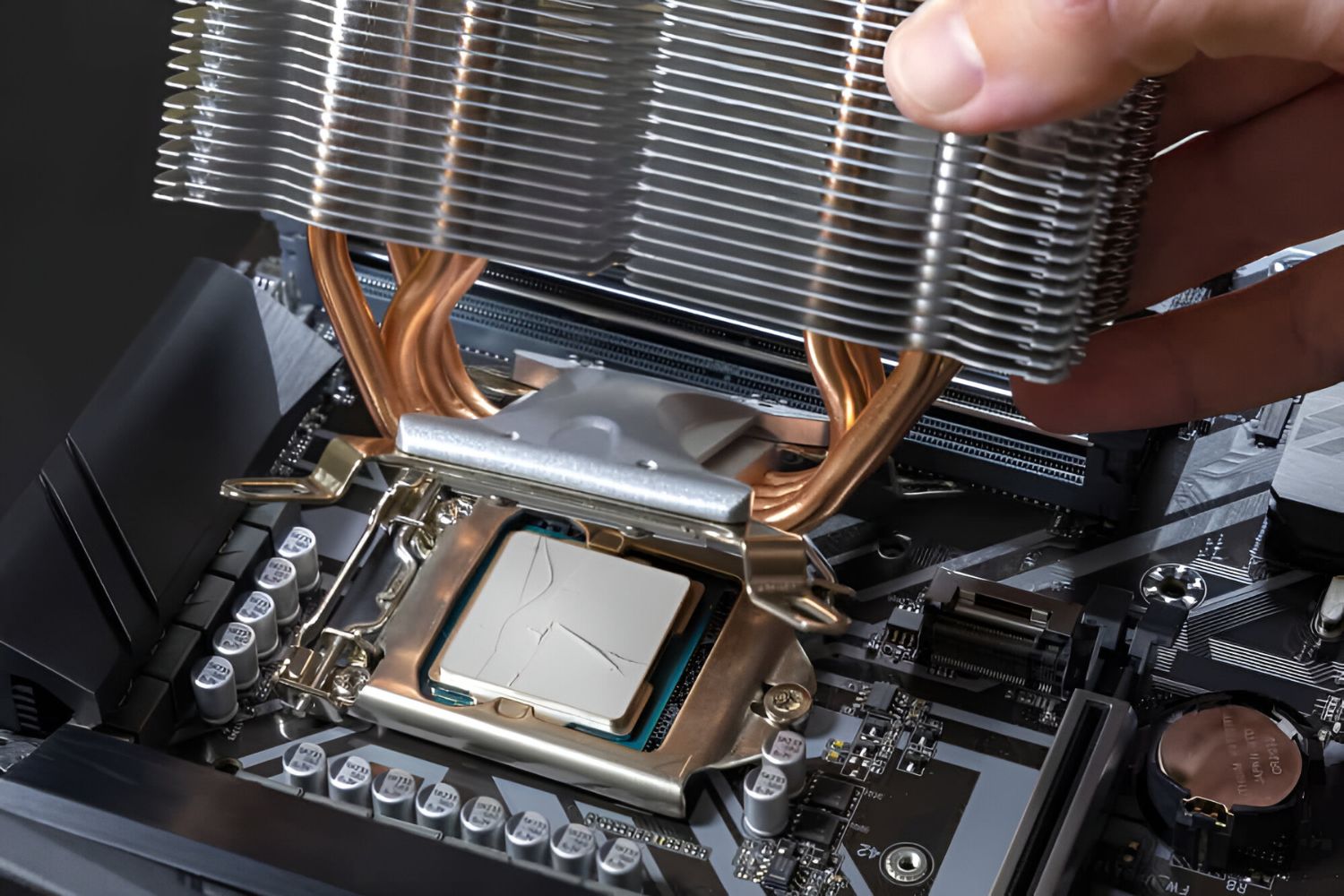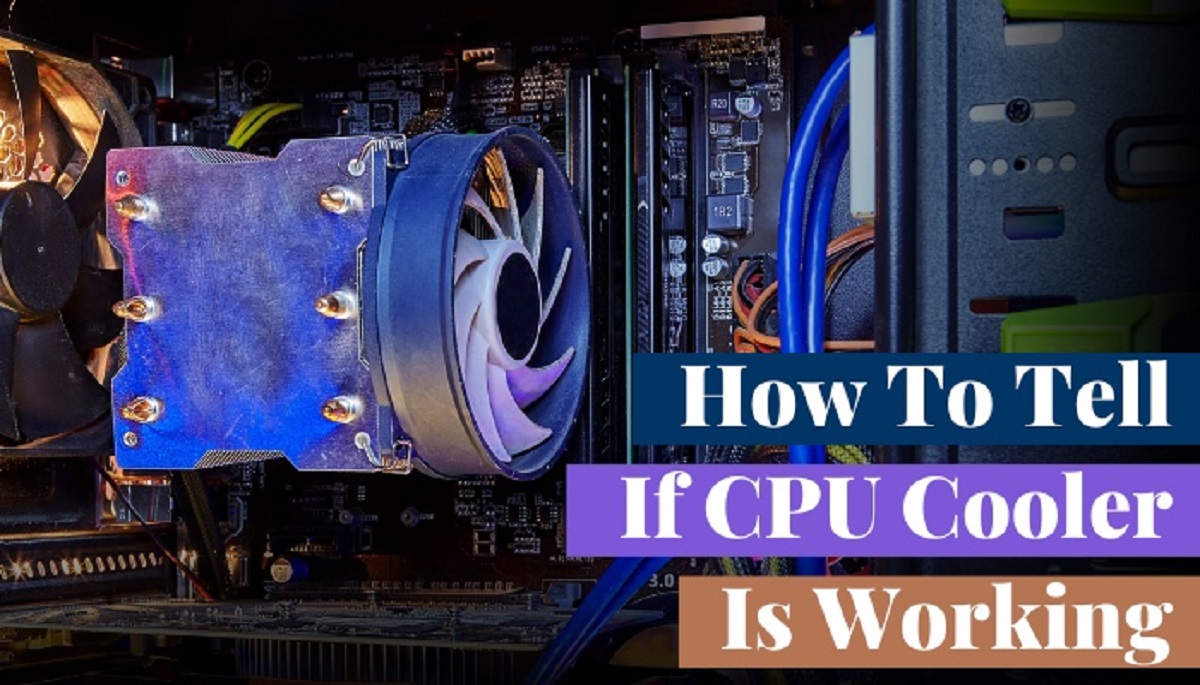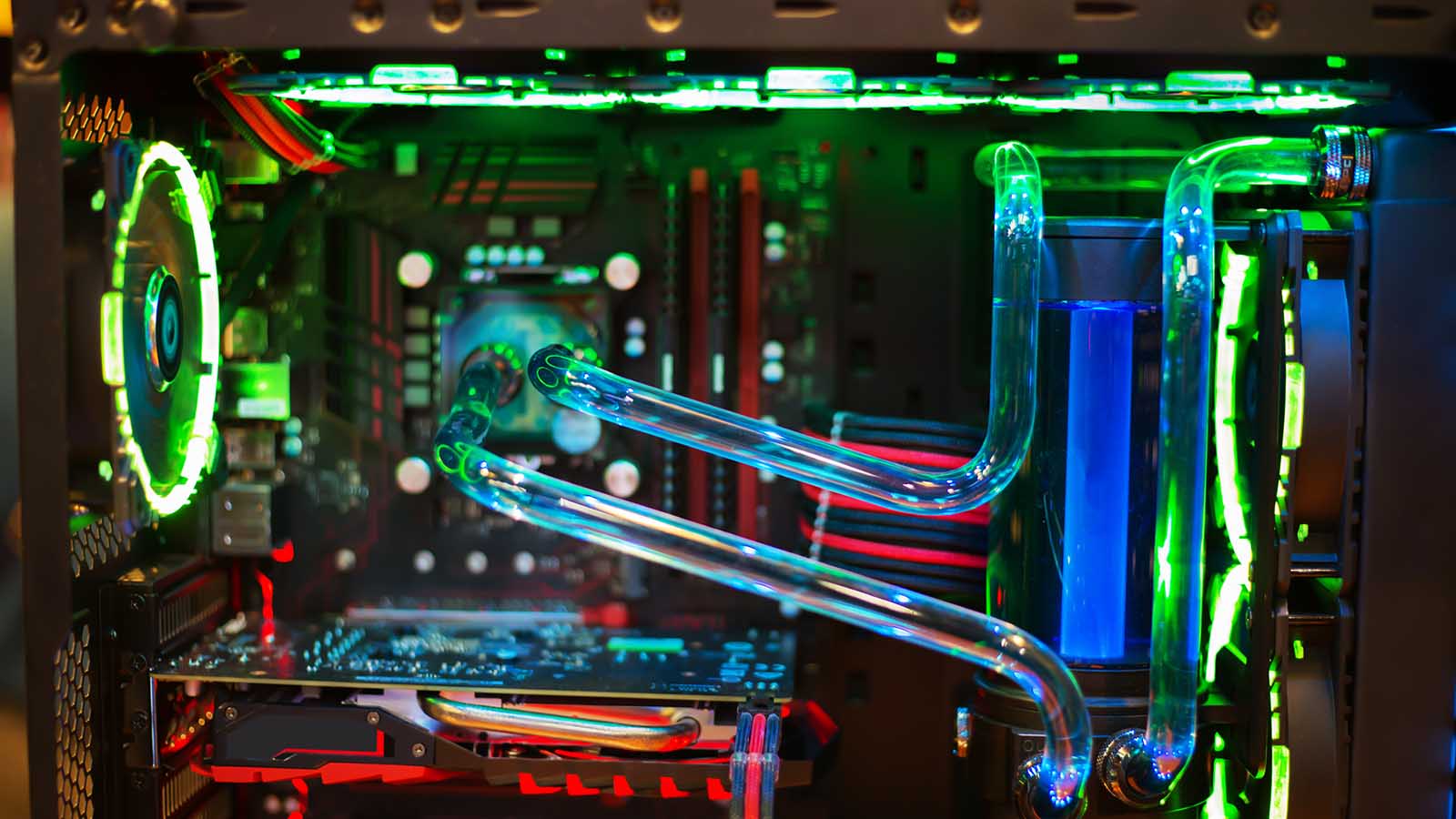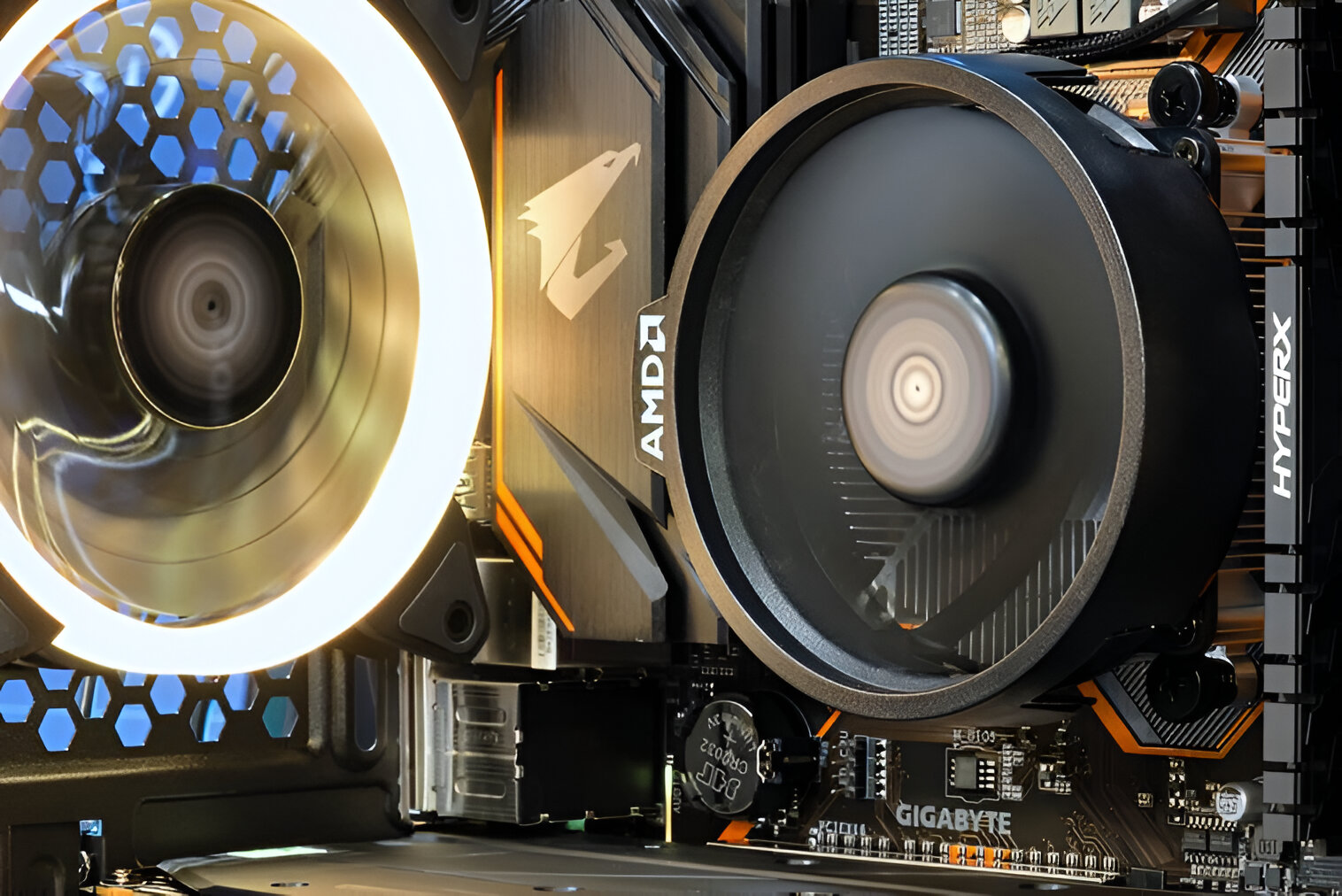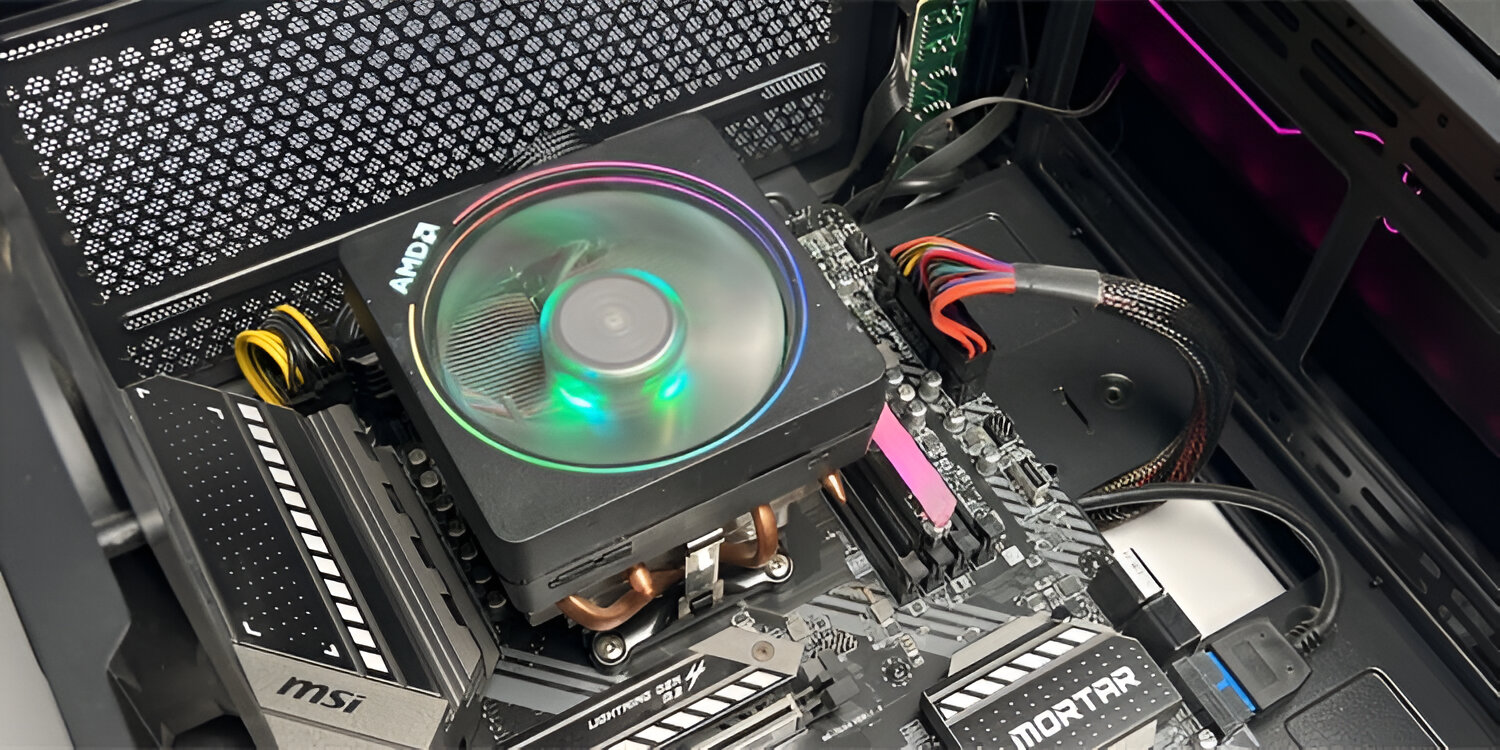Introduction
When it comes to building or upgrading a PC, ensuring compatibility between components is crucial for optimal performance. One such pairing that requires careful consideration is the compatibility between the CPU cooler and the motherboard. The CPU cooler plays a critical role in keeping the processor’s temperature in check, preventing overheating and potential damage to the system. However, not all coolers are compatible with all motherboards, which can lead to complications and compatibility issues.
In this article, we will discuss how to determine if a CPU cooler is compatible with a particular motherboard. We will explore various factors you need to consider, such as the socket type, thermal design power (TDP), clearance, mounting mechanism, RAM compatibility, and case compatibility. By understanding these essential aspects, you can ensure that your CPU cooler will fit and function properly with your chosen motherboard.
Whether you are a PC DIY enthusiast or a first-time builder, understanding the compatibility between CPU coolers and motherboards will help you make informed decisions and avoid costly mistakes. So, let’s dive into the details and learn how to choose a CPU cooler that is compatible with your motherboard.
Why Compatibility Matters
Ensuring compatibility between the CPU cooler and motherboard is crucial for several reasons. Firstly, a compatible CPU cooler is necessary for effective cooling of the processor. The CPU generates heat when it is running, and a cooler is responsible for dissipating that heat. If the CPU cooler is not compatible with the motherboard, it may not fit properly, resulting in inadequate cooling and potential overheating issues.
Secondly, compatibility ensures that the cooler can be properly attached and secured to the motherboard. Different coolers use different mounting mechanisms, such as clips, brackets, or screws. If the cooler and motherboard are not compatible, you may struggle to install the cooler correctly, jeopardizing its stability and potentially damaging the other components.
Another reason why compatibility matters is the impact it has on system performance. If the CPU cooler is not designed to handle the thermal demands of the processor, it may struggle to keep the temperature within safe limits. This can lead to thermal throttling, where the CPU reduces its performance to prevent overheating. Consequently, this can result in decreased overall system performance and a less-than-optimal computing experience.
Additionally, compatibility is essential for maintaining proper clearance within the system. Some CPU coolers can be quite large and may interfere with other components, such as memory modules or graphics cards. If the cooler is not compatible, it may obstruct the RAM slots or interfere with the installation of other expansion cards. This can result in the need to make compromises or even the inability to use certain components altogether.
Lastly, choosing a compatible CPU cooler reduces the risk of compatibility issues when it comes to upgrading or swapping components in the future. By opting for a cooler that is known to be compatible with a wide range of motherboards, you can ensure that you have more flexibility when it comes to future system upgrades. This can save you time, money, and potential headaches down the line.
Overall, compatibility between the CPU cooler and motherboard is essential for proper cooling, installation, system performance, clearance, and future-proofing. By considering compatibility at the outset, you can avoid unnecessary complications and ensure a smoother and more efficient PC building or upgrading experience.
Checking the Socket Type
One of the primary considerations when determining CPU cooler compatibility with a motherboard is the socket type. The socket type refers to the physical design of the CPU socket on the motherboard, which determines the shape and size of the CPU cooler that can be installed.
Each CPU socket has a specific configuration and number of pins, and different manufacturers may use unique socket designs for their processors. It is essential to ensure that the CPU cooler you choose is designed to fit the socket type of your motherboard and compatible with the processor you plan to use.
To determine the socket type of your motherboard, you can refer to the manufacturer’s documentation, check the motherboard’s specifications on the manufacturer’s website, or consult the user manual. The socket information is usually listed under the technical specifications or supported CPU section.
Once you have identified the socket type of your motherboard, you can search for CPU coolers that are explicitly designed for that socket. Most CPU cooler manufacturers provide compatibility information on their websites or product packaging to indicate which sockets a particular cooler supports.
When selecting a CPU cooler, ensure that it is compatible with the socket type of your motherboard. A cooler designed for a different socket will not physically fit or align with the CPU socket, making it impossible to install correctly.
If you are unsure about the compatibility between the CPU cooler and socket type, you can also consult online forums, user communities, or seek guidance from knowledgeable individuals. It is always better to double-check and verify compatibility before making a purchase to avoid disappointments or compatibility issues.
By checking the socket type of your motherboard and choosing a CPU cooler explicitly designed for that socket, you can ensure a proper fit and compatibility between the two components.
Matching the TDP
Another important factor to consider when determining CPU cooler compatibility with a motherboard is the thermal design power (TDP) of the processor. The TDP represents the maximum amount of heat that the CPU generates and needs to dissipate. Therefore, it is crucial to choose a CPU cooler that can effectively handle the TDP of your processor.
The TDP rating of the processor is typically provided by the manufacturer and can be found in the specifications or product documentation. It is usually given in watts, representing the power consumption and heat dissipation capacity of the processor.
When selecting a CPU cooler, it is recommended to choose one with a TDP rating that is equal to or greater than the TDP of your processor. This ensures that the cooler can adequately handle the heat generated by the CPU and prevent overheating.
A CPU cooler with a lower TDP rating than the processor’s TDP may struggle to dissipate the heat effectively, leading to thermal throttling and decreased system performance. On the other hand, a cooler with a significantly higher TDP rating may be overkill and unnecessary, resulting in wasted resources and increased cost.
It is worth noting that some CPU coolers have a range of TDP ratings, making them compatible with a variety of processors. This versatility can be beneficial if you plan to upgrade your processor in the future or if you are unsure of the specific TDP rating of your current CPU.
When researching CPU coolers, look for the TDP range or specific TDP rating mentioned in the product specifications. You can compare this information with your processor’s TDP to ensure compatibility.
Matching the TDP of the processor with a suitable CPU cooler is crucial in maintaining optimal performance and preventing overheating. By selecting a cooler that can handle the TDP of your processor, you can ensure that your system remains stable and operates efficiently.
Determining the Clearance
When choosing a CPU cooler, it is essential to consider the clearance or available space inside your computer case. The clearance refers to the distance between the motherboard and other components, such as memory modules, graphics cards, or VRM heatsinks. It determines the maximum height or width of the CPU cooler that can be accommodated without interfering with other components.
To determine the clearance in your case, you need to identify the specific measurements and dimensions provided by the case manufacturer. This information can usually be found on the case’s product page, user manual, or specifications sheet.
Once you have the clearance measurements, you can compare them with the dimensions of the CPU cooler you are considering. CPU cooler manufacturers often provide detailed specifications, including height, width, and length, which can help you determine if it will fit in your case.
It is essential to consider not only the overall size of the CPU cooler but also the positioning of the cooling fans or heat pipes. These components can extend beyond the main body of the cooler and may require additional clearance.
When calculating the available clearance, remember to account for any potential interference with nearby components, such as RAM slots or graphics card expansion slots. Some coolers with larger heatsinks or fans may obstruct these areas, making it impossible to properly install or remove components.
If you are unsure about the available clearance or concerned about potential compatibility issues, you can refer to online resources, forums, or user communities. Often, other individuals who have used the same case and cooler combination can provide valuable insights and experiences.
Ensuring proper clearance is crucial to avoid potential conflicts or damages during installation. By verifying the dimensions of your case and comparing them with the specifications of the CPU cooler, you can ensure compatibility and a hassle-free installation process.
Considering the Mounting Mechanism
The mounting mechanism of a CPU cooler refers to how it attaches and secures to the motherboard. Different coolers utilize various mounting mechanisms, such as clips, brackets, or screws. It is essential to consider the mounting mechanism and ensure compatibility with your motherboard.
Before purchasing a CPU cooler, it is crucial to check the compatibility of the mounting mechanism with the motherboard. This information can usually be found in the product specifications or documentation provided by the cooler manufacturer.
One common mounting mechanism is the ‘Intel LGA’ and ‘AMD AM’ series. These are socket-specific designs used by Intel and AMD processors, respectively. Make sure the CPU cooler supports the appropriate LGA or AM socket type to ensure a proper fit.
In addition to the socket compatibility, you may also need to consider the orientation of the mounting mechanism. Some coolers have specific requirements for the orientation of the mounting brackets or screws, which may affect how the CPU cooler can be installed in your case.
It is also worth noting that certain cooler models may require additional accessories or mounting kits to be compatible with specific motherboard brands or models. Be sure to check if any additional parts are needed for proper installation.
When installing the CPU cooler, ensure that it is properly aligned and secured according to the manufacturer’s instructions. Incorrect installation can lead to instability, poor cooling performance, or even damage to the CPU or motherboard.
If you are uncertain about the compatibility of the mounting mechanism, it is advisable to consult online resources, manufacturer forums, or seek advice from experts or experienced PC builders. They can provide guidance based on their knowledge and personal experiences.
By considering the mounting mechanism compatibility, you can ensure a secure and stable attachment of the CPU cooler to the motherboard, resulting in optimal cooling performance and peace of mind.
Checking for RAM Compatibility
When selecting a CPU cooler, it is essential to consider its compatibility with the RAM modules installed on your motherboard. In some cases, CPU coolers with large heatsinks or bulky designs may obstruct the memory slots, making it impossible to install or remove RAM modules.
To determine the compatibility between the CPU cooler and RAM modules, you need to consider the height and positioning of the cooler’s heatsink or fans. Some CPU coolers have low-profile designs specifically tailored to allow clearance for RAM modules, while others may have tall heatsinks that can interfere with the space above the memory slots.
Before making a purchase, consult the specifications provided by the CPU cooler manufacturer to check if there are any height restrictions or compatibility issues with RAM modules. Look for maximum RAM clearance or compatibility information mentioned in the product documentation or on the manufacturer’s website.
If you already have RAM modules installed on the motherboard, be sure to measure their height or refer to their specifications and compare them with the CPU cooler’s dimensions. This will help you determine if the CPU cooler will fit without obstructing the RAM slots.
In some cases, it may be necessary to remove the RAM modules temporarily during the CPU cooler installation process and then reinstall them once the cooler is properly mounted. However, this step can be time-consuming and inconvenient, especially if you frequently upgrade or replace components.
Additionally, it is worth noting that RAM modules with taller heatspreaders may also pose compatibility challenges. If the heatspreaders on the RAM modules are too tall or have a bulky design, they may interfere with the installation of the CPU cooler.
If you are uncertain about the RAM compatibility with a specific CPU cooler, you can consult online resources, forums, or user communities. Other individuals who have used the same combination of cooler and RAM modules can provide valuable insights and experiences.
Ensuring compatibility between the CPU cooler and RAM modules is essential to avoid installation issues and allow for smooth operation of the system. By checking the dimensions and clearance requirements of the CPU cooler, you can ensure that it fits alongside the installed RAM modules without any conflicts.
Checking for Case Compatibility
In addition to considering the compatibility between the CPU cooler and motherboard, it is important to ensure that the chosen CPU cooler is compatible with your computer case. The compatibility between the CPU cooler and case primarily revolves around the available space and the airflow within the case.
Before purchasing a CPU cooler, it is crucial to check the maximum height or width allowed for the cooler in your computer case. This information can usually be found in the specifications or product description of the case provided by the manufacturer.
Measure the available space inside the case, especially the distance from the motherboard to the side panel, to ensure that the CPU cooler will fit without any clearance issues. Some PC cases have specific CPU cooler height restrictions due to narrow side panels or limited interior space.
Additionally, consider the airflow design of your case. Some cases have dedicated CPU cooler clearance near the top or back of the case, allowing for larger coolers with better cooling capabilities. On the other hand, some cases may have limited clearance and placement options, restricting your choices for CPU coolers.
Furthermore, take note of any potential interference between the CPU cooler and case fans or radiator placement. Ensure that there is ample space for the CPU cooler without obstructing the airflow from the case fans or the installation of liquid cooling radiators.
If you are unsure of the compatibility between the case and CPU cooler, it is advisable to consult the manufacturer’s website or user manuals for detailed information about supported CPU cooler sizes and configurations.
Online forums and community discussions can also be valuable sources of information. Other users who have a similar case or have encountered compatibility issues can provide insights based on their experiences.
By ensuring compatibility between the CPU cooler and the computer case, you can guarantee proper installation, prevent clearance issues, and maintain optimal cooling performance for your system.
Conclusion
Choosing a compatible CPU cooler for your motherboard is essential for maintaining optimal performance, preventing overheating, and ensuring a smooth PC building or upgrading experience. By considering factors such as the socket type, TDP, clearance, mounting mechanism, RAM compatibility, and case compatibility, you can make an informed decision and avoid compatibility issues.
Checking the socket type ensures that the CPU cooler will physically fit and align with the CPU socket on the motherboard. Matching the TDP of the CPU cooler to the processor’s TDP helps ensure effective heat dissipation and prevents thermal throttling.
Determining the clearance in your case allows you to know the available space for the CPU cooler and avoid interference with other components. Considering the mounting mechanism ensures that the cooler can be properly installed and secured to the motherboard.
Checking for RAM compatibility ensures that the CPU cooler will not obstruct the memory slots or interfere with the installation of RAM modules. Lastly, checking for case compatibility guarantees that the CPU cooler will fit within the confines of your computer case without obstructing airflow or causing clearance issues.
By taking these factors into account, you can select a CPU cooler that not only fits your motherboard but also functions effectively within your system, providing efficient cooling and optimal performance.
Remember to consult the manufacturer’s specifications, user manuals, and online resources, and seek advice from experienced PC builders or user communities if you have any doubts or concerns about compatibility.
With careful consideration and attention to compatibility, you will be able to choose a CPU cooler that is well-suited for your motherboard and enjoy a stable and efficient PC system.







